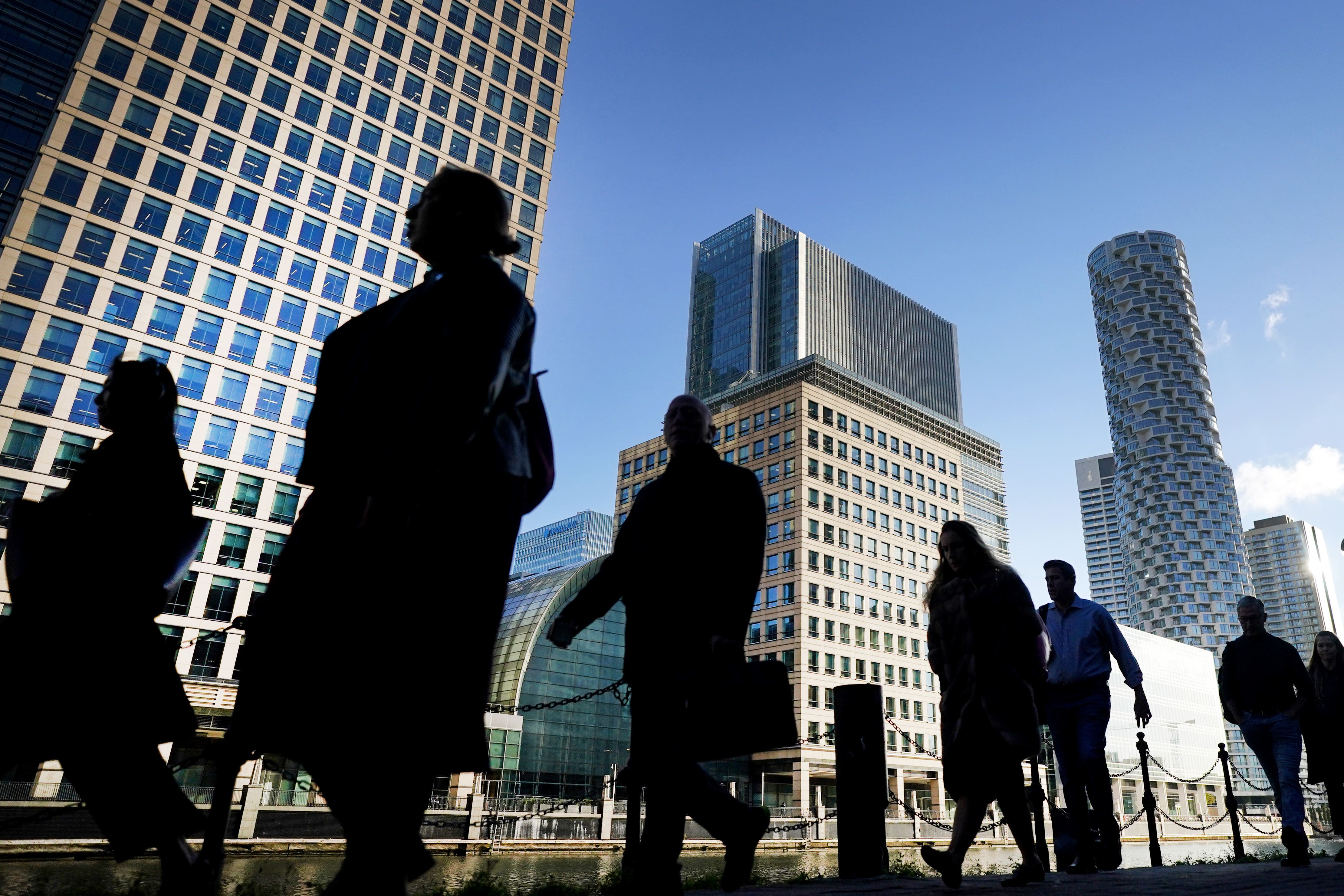Wage growth surges to near-record levels as signs point to cooling jobs market
Data from the Office for National Statistics showed that pay growth was stronger than at any time outside of the pandemic.

Your support helps us to tell the story
From reproductive rights to climate change to Big Tech, The Independent is on the ground when the story is developing. Whether it's investigating the financials of Elon Musk's pro-Trump PAC or producing our latest documentary, 'The A Word', which shines a light on the American women fighting for reproductive rights, we know how important it is to parse out the facts from the messaging.
At such a critical moment in US history, we need reporters on the ground. Your donation allows us to keep sending journalists to speak to both sides of the story.
The Independent is trusted by Americans across the entire political spectrum. And unlike many other quality news outlets, we choose not to lock Americans out of our reporting and analysis with paywalls. We believe quality journalism should be available to everyone, paid for by those who can afford it.
Your support makes all the difference.Average wages in the UK have grown at a faster rate than at any time outside of the pandemic, amid signs of a slowdown in the jobs market, official figures show.
The Office for National Statistics (ONS) said that regular pay growth, which excludes bonuses, surged to 6.7% in the three months to December as employers came under increased pressure to lift wages as living costs soar.
The only time on record that the rate has been higher was in 2021, in the midst of the global pandemic, when regular pay growth reached highs of 7.3%.
But the ONS data showed workers are still seeing their pay growth fail to keep pace with sky-high prices as the cost-of-living crisis keeps households under pressure.
The latest figures revealed the unemployment rate remained unchanged in the final quarter of 2022, at 3.7%, the same rate that was recorded in the three months to November and remaining close to record lows.
However, the ONS indicated signs of a slowdown in the labour market, with another fall in vacancies being listed and a slight uptick in the rate of redundancies.
The estimated number of vacancies fell by 76,000 – the seventh consecutive fall, the ONS said.
This reflects economic pressures and uncertainty, leading firms to hold back on recruitment, it said.
It comes after figures last week showed UK output was flat in the final quarter of 2022, narrowly avoiding recession but seeing growth stagnate ahead of what is expected to be a difficult year for the economy.
Chancellor Jeremy Hunt insisted: “In tough times unemployment remaining close to record lows is an encouraging sign of resilience in our labour market.
“The best thing we can do to make people’s wages go further is stick to our plan to halve inflation this year.”
Private sector workers saw a 7.3% boost to average pay, significantly higher than the 4.2% increase for public sector workers, who have been taking significant strike action in recent months, according to the data.
The ONS revealed that there were 843,000 working days lost to industrial action in December 2022, which is the highest since November 2011.
Once consumer prices index (CPI) inflation is taken into account, average regular pay fell by 3.6% in the three months to December, compared with the previous year.
It is a slightly smaller decline than the record fall recorded in the three months to June last year, at 4.1%, but still remains among the largest falls seen since comparable records began in 2001, the ONS said.
It means that even though average wages are rising, they are still not meeting inflation, which reached 10.5% in December and continues to erode household incomes.
Businesses are crying out for people to fill job vacancies at all skill levels, and this must be the number one focus for Government if it’s serious about economic growth
Nevertheless, experts have said that the strong pay growth figure could pile pressure on the Bank of England to further raise interest rates.
The Bank’s policymakers have previously said that if employers increase staff wages too much then it can have the negative effect of “locking in” high inflation.
James Smith, developed markets economist at ING Economics, said there is little sign that wage growth is slowing, which will be “a concern for the Bank of England’s hawks”.
He is predicting another rate hike in March by 0.25 percentage points, taking interest rates to 4.25%, although he said that it is likely to be the last increase.
There were also signs of a wave of people returning to the workplace amid the cost-of-living crisis, as the data showed a record high net flow of people moving from economic inactivity and into employment.
This was driven largely by younger people and students, and older people aged 50 to 64, for whom inactivity dropped the most.
Jane Gratton, head of people policy at the British Chambers of Commerce (BCC), said: “Businesses are crying out for people to fill job vacancies at all skill levels, and this must be the number one focus for Government if it’s serious about economic growth.
“There are still a huge number of vacancies, currently sitting at 1.134 million, and this is stopping firms in their tracks. It means they are struggling to meet the orders on their books, and it puts any plans for growth far out of reach.”
The number of jobless people hit 1.27 million in the three months to December, an increase of 26,000 people.
But the number of people in employment increased by 32,000 to hit 32.8 million over the period.